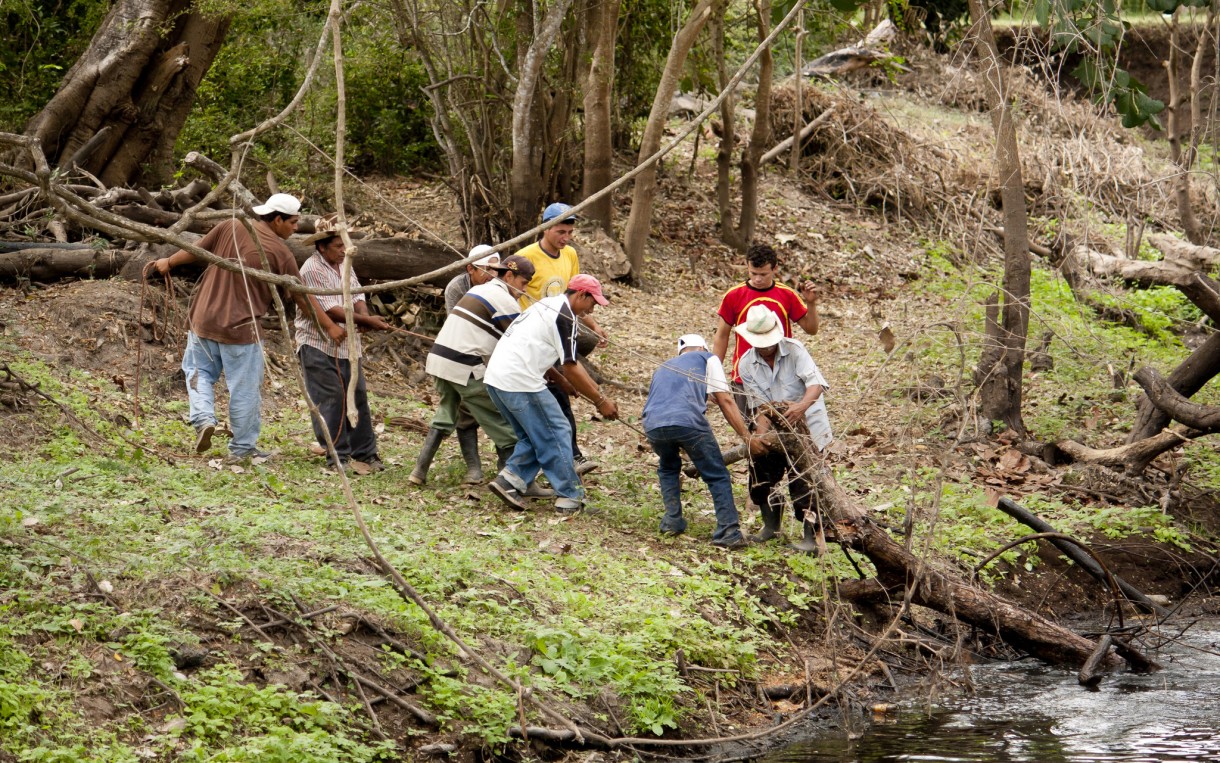Hurricanes don’t stop at the county line
 Participants in a food-for-work program clearing a channel of debris in a village in El Salvador - part of an effort to mitigate future floods following Tropical Depression 12E.
Participants in a food-for-work program clearing a channel of debris in a village in El Salvador - part of an effort to mitigate future floods following Tropical Depression 12E.
Leaders in Puerto de La Libertad, a community frequently in the path of disasters, have taken preparedness into their own hands and it’s making all the difference.
This blog post is the third in a series about how people in El Salvador are working to prepare for, respond to and recover from emergencies. Previously: (1) While the sun shines: How Salvadorans are leading their own efforts to prepare for the worst; (2) How Salvadoran towns are leading on disaster management
Puerto de La Libertad is a port and beach community on El Salvador’s central coast. A popular tourist destination, Puerto de La Libertad is ranked as one of the world’s top ten surfing locations. And while coastal living has its advantages, it doesn’t come without challenges.
The Mayor of Puerto de La Libertad, Carlos Molina, and his staff shared their risk management challenges and efforts. Puerto de La Libertad faces the same threats as the country at large, but with some additional, specific challenges. During earthquakes, the coastline can experience tsunamis; and as it lies downhill from most of El Salvador, in heavy rains, the town needs to worry not only about its own runoff, but runoff from higher elevations. Puerto de La Libertad can easily handle 40mm of rain falling on the town itself; but 40mm of rain from higher elevations can cause severe challenges.
Mayor Molina explained how municipal efforts have changed in the last five years. “In 1998, we had no risk management approach. We had no idea how to deal with Mitch. The only thing the municipal government did was hand out food; no shelters or water. Then after the sun came out, the response ended. When homes in low lying areas would get washed away by floods, we would simply hand out corrugated tin so they could rebuild in the same place; then they would get washed away again. We would put out the fire but forget the people.”
“In November 2009, when Hurricane Ida hit, that was the driver for more awareness. We now have 41 community commissions sworn in; ten more are pending. We coordinate through our municipal civil protection committee. We have a seismograph and monitoring system, command and monitoring center, weather station and chainsaws. Before, we didn’t know what was happening where. We also have an ambulance; previously city equipment was not available for response.
“During Ida, we had four people die, including three Red Cross volunteers. Since Tropical Depression 12E (2011), up until now, we have had no deaths due to emergencies. We have recently been named as one of 18 municipalities designated a ‘resilient community.’”
While Puerto de La Libertad has made great strides improving its own preparedness, the laws of gravity limit what the community can do itself. “The big problem is our position at the bottom of the Cordillera del Bálsamo watershed. The reduction of catchment areas upstream means we need to absorb the runoff that results from other communities’ bad practices.” The Mayor stressed the need for better national efforts to manage land use and reduce risks. He is trying to work with adjacent communities at higher elevations to manage risks. “In the San Diego and San Antonio river basins we have formed a committee for basin recovery. But big companies building golf courses and developments are producing more runoff. Increased speed of runoff means less time for early warning. We monitor weather up north to be better prepared.”
—
Oxfam is advocating that humanitarian actors do more to support local leadership and self-reliance in preparing for, responding to, and recovering from emergencies:
- Read our flagship report about the need to reform the global humanitarian system;
- Read about our efforts to get the United States government to invest more in local self-reliance in emergencies;
- Read stories of the local heroes who are helping their countries and communities become disaster self-reliant.